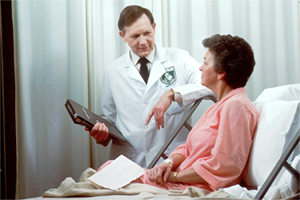
In a recent webinar by The Care Show looking at the challenges of home care, one comment asked was that when developing technology in healthcare, are patients and end users involved enough. This is not saying they are an afterthought. After all, the central reason of any solution is to help healthcare professionals deliver better patient care. But first ideas tend to be highly assumptive and don’t involve users beyond some initial research beyond asking if they think it sounds a good idea.
This approach misses the opportunity to receive detailed, first-hand patient feedback. Lets take arguably the most important criteria – ease of use – as an example. This is most likely to be only considered at some late on point in the prototyping stage. There can also be an expectation that the patient needs to adapt to the idea. And that can fundamentally undermine the intended benefits of the idea itself. In practice, some users will try to adapt to the solution, but most will either use it incorrectly or not at all.
Not everyone in the healthcare technology solutions sector has this mindset. Some do undertake extensive qualitative research before making any commitment to development and prototyping. Some projects do not have direct access to patients who can provide crucial feedback. And this could hold back ground-breaking ideas. Perhaps it is time for solution developers to have a level field with a managed route to patient feedback. This would give them access to a sample of patients they are looking to develop a solution for, who can then provide their feedback, raw and unfiltered.
The Importance Of Feedback
If we’re talking about patient feedback then we really should also include health professionals too. The people expected to use a technology solution to treat patients often could (and indeed, should) be involved more in the development and testing processes. The alternative is launching a solution which adds layers to existing process, or even increases the health professional’s workload for a patient. And this is far from being a benefit to anyone.
This particular point can be of particular importance when designing user interfaces, or producing dashboards for reporting. For example, using common icons across different technology solutions. This would be a small yet hugely beneficial step towards improving user take-up, It would help users to become familiar with different solutions when treating a range of patient conditions. For reporting and warning systems, there is the temptation to provide comprehensive swathes of charts and diagrams for full 360-degree patient views. The idea of providing so thorough, while well meaning, can be counter-productive; historical research in the deployment of dashboards and alerting services in IT Network Management systems shows how they resulted in users being overwhelmed by data and continual alerts for minor issues, which resulted in cumulative problems not being dealt with until it was at a critical stage.
This does bring us briefly to mention a practical strong point of ML/AI. Using the ability to predict outcomes rather than warn of past or current situations streamlines user information to what they need to know, what they need to do and – very importantly – when in the future they need to do it.
Would increasing the involvement of users and patients in creating technology solutions result in longer development cycles?
There is a case for disputing this. While there would need to be more time spent at the preliminary stages, the feedback gained would provide better insight and guidance and therefore reduce development and testing further down the line. So in summary, the point made within the webinar is very much a valid one and something technology solutions providers would find to their advantage if they embrace it.
